Q&A: Michelle Baum, Care Resource Coordinator for PIH in Massachusetts
The recent social work grad talks about her role fighting COVID-19 and what the pandemic is revealing about gaps in social support.
Posted on Jun 18, 2020
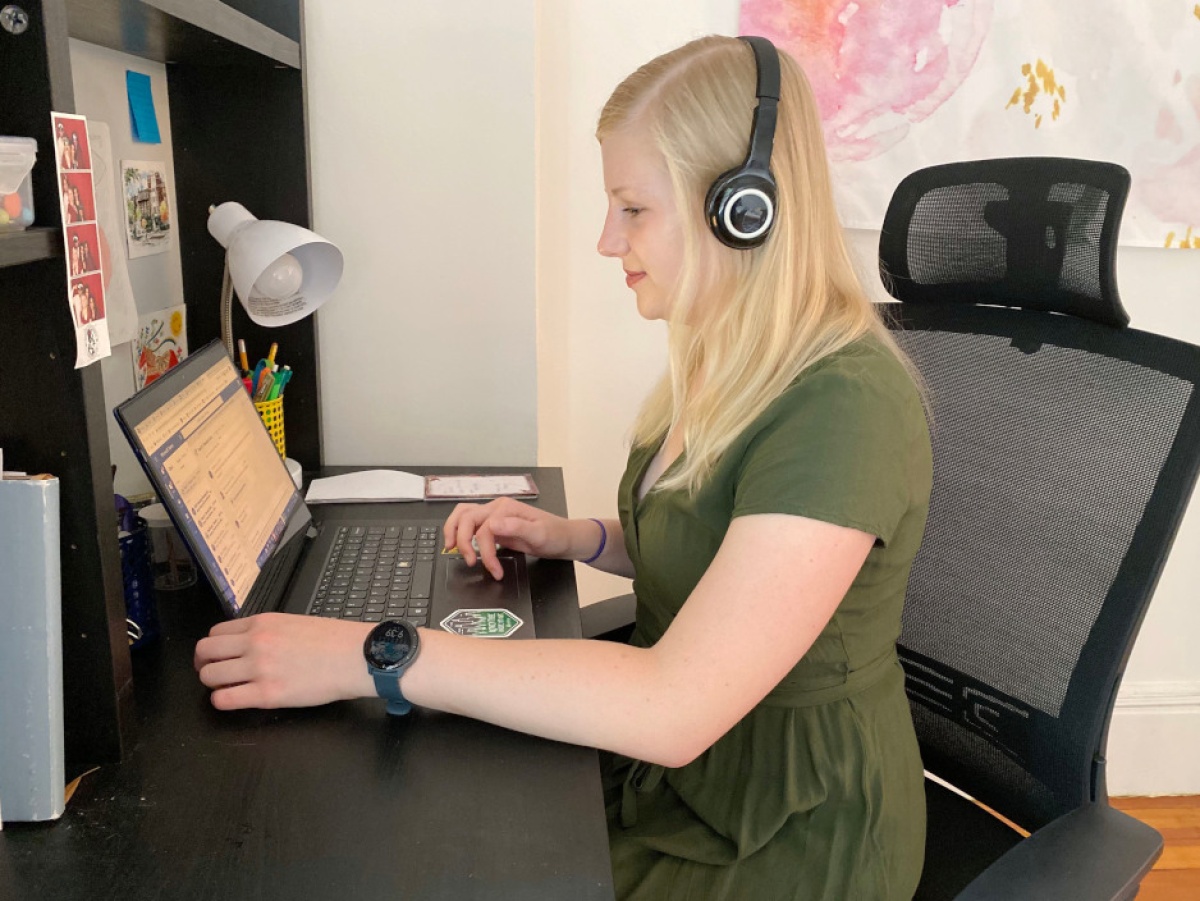
While contact tracers are on the frontlines of tracking the spread of COVID-19, colleagues known as care resource coordinators are leading an equally vital charge: connecting patients with the social support they need to quarantine safely and stay healthy.
Michelle Baum, 24, is a care resource coordinator for the Massachusetts Community Tracing Collaborative (CTC). The statewide program of community outreach, virtual contact tracing, quarantine, and patient accompaniment is a key part of comprehensive efforts to control and end transmission of the novel coronavirus in Massachusetts.
Partners In Health and state government launched the CTC in April, as the first large-scale coronavirus contact tracing program in the U.S. The Massachusetts Department of Public Health and local boards of health continue to lead contact tracing efforts, with ongoing support from the CTC.
The CTC has hired and trained more than 1,900 staff members since it launched. As of June 1, that staff had reached out to more than 26,000 people with confirmed cases of COVID-19 and made nearly 275,000 calls.
The CTC estimates that 10 to 20 percent of people contacted are in need of some kind of social support.
As a care resource coordinator, Baum speaks every day with people who have tested positive, as well as those at high risk for infection, to connect them with support and resources in their community. A resident of Boston’s Fenway area, Baum recently spoke with PIH about her role, what needs she’s seeing, and what COVID-19 is revealing about gaps in the social support network.
Q: What drew you to the CTC?
I come from a background of social work and public health, so I was excited about the CTC, because it combines those two fields—and I feel like you can't really separate them.
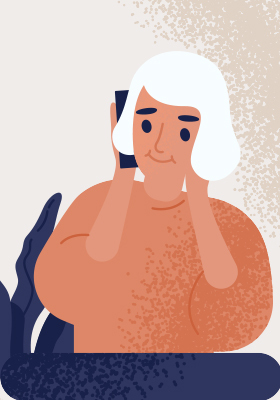 Specifically, I just graduated from Boston University with my master's in social work and have one more year finishing my master's in public health, as a part of BU's dual degree program. I had internships at a women's center in Dorchester as well as a residential eating disorder program for my social work program. Additionally, I worked as a research assistant on a project working with Spanish-speaking Latinx adults in the Boston area, in recovery from substance use disorders. I'm passionate about the intersection between social work and public health, especially as it relates to mental health and the social determinants of health.
Specifically, I just graduated from Boston University with my master's in social work and have one more year finishing my master's in public health, as a part of BU's dual degree program. I had internships at a women's center in Dorchester as well as a residential eating disorder program for my social work program. Additionally, I worked as a research assistant on a project working with Spanish-speaking Latinx adults in the Boston area, in recovery from substance use disorders. I'm passionate about the intersection between social work and public health, especially as it relates to mental health and the social determinants of health.
I first got involved with COVID-19 contact tracing in Massachusetts as a volunteer with the Academic Public Health Volunteer Corps, while the PIH CTC was getting started. I worked on the team that assisted the city of Lawrence.
I was really happy that Partners In Health and the state of Massachusetts felt it was important to do this social support and connect people with resources. I felt like most of the conversations I was having with people who were skeptical of contact tracing or quarantining were like, "Well, yeah, you can tell people to stay at home, but what happens when they need food or they need money for work or things like that?" I was just really grateful and excited to see that the state and Partners In Health would be addressing those needs directly.
Q: How are things going?
So far, it's been a really great experience working on the Boston team. I think being in my role, specifically, makes the inequitable distribution of needs very apparent. And we're always working in specific locations. For my team and I, it’s East Boston, Dorchester, Roxbury, Mattapan.
A lot of the time, it's people whose first language is different than English. So, I think a lot of inequalities in social services are becoming glaringly obvious through this work.
Q: How does your role as a care resource coordinator fit into the CTC as a whole, and how does it interlock with contact tracing efforts?
People who are quarantining themselves might need food urgently, for example, or diapers or baby formula. Or rent money if they’re not able to work, or cleaning supplies if they’re sharing a space with someone who’s confirmed to have COVID-19.
They call the CTC, saying, “We’re going to leave the house” because of these needs. And then contact tracers are able to say: “Hold on, a care resource coordinator is going to call you.”
There are cases where people don’t know how to get things delivered to their house, or where people need financial assistance or help with food. I recently was working with a client who had just been discharged from the hospital and lived alone. I called him and said, “Do you have any food for today?” He said, “No, I have nothing.”
A lot of the groups that we work with take a few days, understandably, to get food delivered. So, luckily, I was able to connect him with an organization that does emergency GrubHub deliveries for free, and then we were able to get him food delivered the next day to sustain him more.
It was stressful, because this man has no food at home, and he just got released from the hospital and food is such a basic need to restore health in all circumstances, but especially in this.
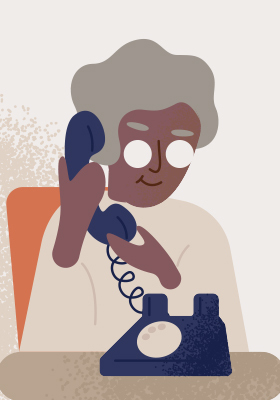 Q: Is there another example that comes to mind?
Q: Is there another example that comes to mind?
I was just working with a family who had a lot of concerns around rent and utility payments. One of the sons who was a contact (of someone positive for COVID-19) was just like, "I need to go out and work." And so, I was able to call them and help them apply for pandemic unemployment assistance and refer them to different organizations or funds to apply for, so the son could stay home and safely quarantine.
Sometimes we also provide an organization to call for help with legal rights, or renters’ rights. People often don't know about the eviction moratorium or that their utilities can't be shut off right now. So, even just letting them know about that can be helpful.
Q: How much follow up do you typically do with families or with a patient?
For people in isolation, contact tracers make follow-up calls daily. For people in quarantine, I believe it's every other day.
Usually, when I follow up with someone as a care resource coordinator, I’ll set something up, like a food delivery or whatever is needed. Then I confirm that it was delivered and, when I do that confirmation, I ask, "Is there anything else that you need, are you going to need another food delivery?" And then, kind of just keep following up.
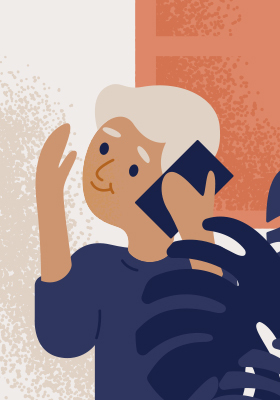 Q: When do you stop following up with someone? Is there any kind of transition, or handoff?
Q: When do you stop following up with someone? Is there any kind of transition, or handoff?
When someone’s quarantine or isolation period ends is when I let them know, "OK, it's ending, I'll refer you off to these other services if you need help in the future."
Or, let’s take a more simple case of just setting up a referral to a primary care physician. Someone I called recently was about to go to the emergency room that day, and I said, "Well, hold on, I could set you up with a (physician) referral."
But then, even after confirming appointments like that, contact tracers or case investigators might continue to be in regular contact with the person. So, frequently they’ll kind of re-task me, and I’ll go back on a case if a new need has popped up.
Q: What’s the difference between quarantine and isolation?
Basically, the difference is whether or not you're a positive case.
If you have tested positive for COVID-19, we ask you to stay in isolation, and we do whatever we can to make that possible.
Quarantine is for people who are contacts of people who have tested positive, and who ideally are able to stay home while they wait to see if symptoms develop.
Q: The person you mentioned earlier who was about to go to the emergency room when you called—were they seeking care because of COVID-19?
Yes. That person was a positive case. He had tested positive previously and had just retested positive, so he had some clinical questions, but he also needed to get another letter for his employer, saying he had to stay home in extended isolation because he had retested positive.
I was able to connect him with a local health agency—and there was a language barrier, too.
He spoke Portuguese and Haitian Creole, so I was able to connect him with providers who speak those languages, get him set up with an appointment and then get a letter to him.
But before I even went down that route, I asked him, "Is there something that's a medical emergency right now?" And he said, "No, it's not really that urgent." I think his sense of urgency was coming from needing the employment letter.
Q: What's the most common type of support that is asked for, and then what's the most common type of support that is fulfilled?
Food and rent money are the most commonly asked. Most commonly fulfilled would be food and cleaning supplies.
For a lot of people and families, instead of pursuing temporary housing to safely quarantine, they're just asking for a lot of cleaning supplies. People who live with several family members or roommates are thinking, "OK, well, I have to clean down this bathroom after every time this person uses it."
And so, local organizations have been really great in terms of being able to donate cleaning supplies and get those delivered, too.
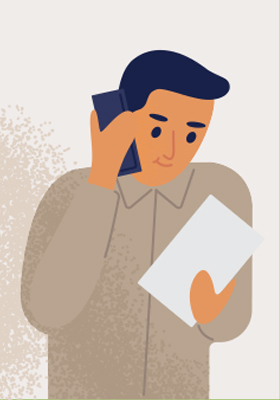 Q: How instrumental are local organizations, like food banks and aid groups, in the CTC’s work?
Q: How instrumental are local organizations, like food banks and aid groups, in the CTC’s work?
I think about this all the time. We could do literally nothing without them. We don't have our own stock (of supplies), we don't have our own resources. We're just kind of connecting people. So without them, we could do zero of our job.
Q: Anything else you’d like to talk about, regarding your role as a care resource coordinator?
Just more about financial assistance. A lot of people are having a lot of worries about rent or utility payments, or having problems with their landlords.
And that's probably the most frustrating part of my job, because I've spent so much time trying to find funds, or whatever the case may be, and they're all closed or not taking applications or whatever the case. It's very frustrating because I know the need is so great, and I know that money is out there somewhere, but I feel I just keep reaching dead ends and then telling families, "Oh, hi, I guess you can get on this waiting list."
And then, finally, I just have an awesome team. I just want to shout out everybody who's involved. Contact tracers, case investigators, and care resource coordinators. Everyone's working really hard and they're great to work with.

